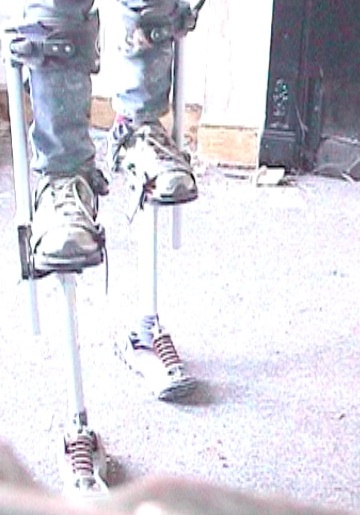How to Plaster a Ceiling
The video below shows how to plaster a ceiling. The method and process for Skimming over an old artex ceiling (with speeded up clips to save you getting bored!).
A coat of PVA was applied to ensure the plaster adheres. This video shows the method of applying the finish coat to a ceiling - the plastering technique is the same as for a wall. Spending time to set up a platform for easy reach, or practice with stilts, will help ensure you stand every chance to gaining a nice flat finish. be prepared for your arm to ache but it will get easier!
How to plaster a ceiling using a Platform or Stilts
Learning to use stilts as well as learning how to plaster a ceiling may be a bit ambitious so initially a platform may be the best option.
It is worth spending the time to ensure you can easily reach all or a reasonable area of the ceiling.
 stilts to plaster a ceiling
stilts to plaster a ceilingMaking it easier
Each area of the ceiling will need to be worked at least 6 different times, so bear in mind your platform will need to move to each area at least 6 times which can be time consuming - time better spent obtaining a nice finish. It can be worth investing in a couple of planks and platforms to ensure you can reach a greater area.
Saving time on the day
If you're plastering a plasterboard ceiling then apart from applying scrim tape to all joints there's not a lot of preparation needed.
If your re-skimming a ceiling then PVA will need to be applied to ensure the plaster properly adheres. A second or third coat may be needed to control the suction. The more PVA applied the more it will seal a porous surface, and ensure the plaster will not firm up too quickly.
If two coats of PVA are needed then the chances are your arm will be aching before you even start plastering so this can always be done a day or two before. The addition of some sand or plaster powder to the PVA solution will not only help you see exactly where you're applying it - by giving it some colour (on a white surface it can be hard to tell if the PVA has been applied) but when dry provides a rough gritty surface to ensure the plaster will stick to it another day.